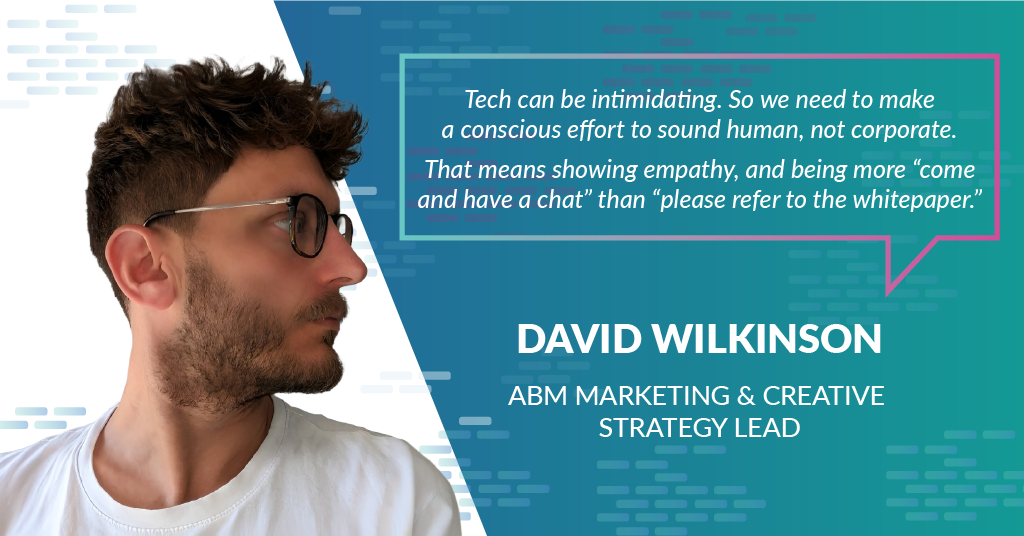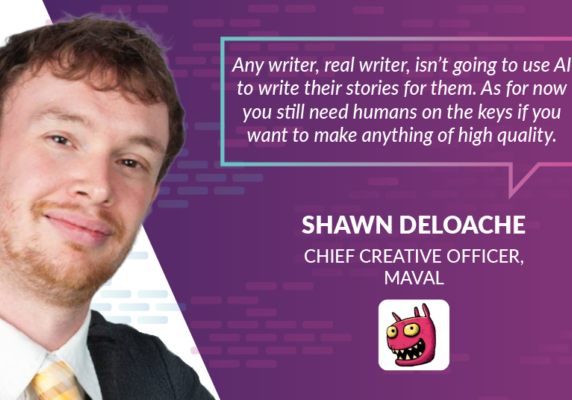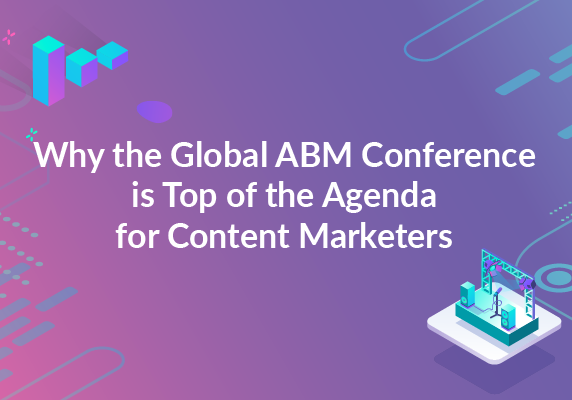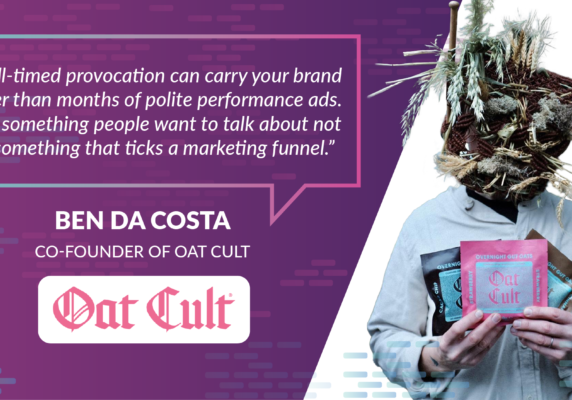B2B brand strategy: how to define a unique place in your market

Welcome David Wilkinson to our Marketing Experts Corner. As an ABM Marketer & Creative lead for large technology organisations, David focusses on empathy, creative and a people-centric approach to B2B Marketing. We discuss his priorities as an ABM Marketer and how his role directly impacts revenue.
1. Working for well-established B2B tech brands, how do you ensure your company is as approachable as possible in all your marketing interactions?
By remembering that no one wants to talk to a robot in a suit.
Tech can be intimidating. So we need to make a conscious effort to sound human, not corporate. That means speaking in plain English, showing empathy, and being more “come and have a chat” than “please refer to the whitepaper.” So, we work hard to sound more like a helpful partner than a faceless tech provider. It’s about showing up with confidence and warmth, using storytelling and design to make even the complex feel simple.
It’s also about consistency too. Whether we’re crafting a campaign or a thought leadership piece or replying to a comment on LinkedIn, every touchpoint should feel like there’s a real person behind it. Ideally one you’d actually want to talk to at a conference. Or the pub.
2. What are your priorities as an ABM specialist, and how does this support your wider marketing strategy?
Three things: relevance, relationships, and results.
ABM lets us tailor everything—from messaging to channels—to the people that matter most. It forces us to get specific, dig into account insight, and design content that actually speaks to real challenges. Not just industry buzzwords. It’s about building campaigns that feel like they were made for that specific account—because they were.
And when we do it right, it doesn’t just support the wider marketing strategy—it elevates it. Because suddenly brand, content, sales and strategy are pulling in the same direction. And the customer feels seen, not sold to.
You earn attention not just through clever creative, but by genuinely understanding the client’s world. Done right, ABM doesn’t just support the wider strategy—it is the strategy. It drives better conversations, deeper relationships, and more meaningful impact. And it gives marketing a seat at the revenue table, which—let’s be honest—is where we should be.
3. Apart from hitting ‘big purpose’ goals for sustainability, inclusivity etc., what other areas of brand marketing do you feel B2B tech companies should be looking to improve?
Personality. Hands down.
We’ve come a long way from grayscale brochures and jargon-filled PDFs, but too many B2B tech brands still play it safe. We forget that decision-makers are human. They’re scrolling LinkedIn like the rest of us. If your content doesn’t stop the thumb or spark a feeling, it’s forgotten.
Too often, we hide behind safe language and generic messaging. But your brand should stand for something more than a list of services. B2B brands need to embrace creativity.
So I’d love to see more humour. More storytelling. More unexpected creativity. That doesn’t mean losing credibility—it just means showing up in a way that’s memorable. Whether it’s a campaign or a case study, if it doesn’t make you feel something, it’s probably forgettable.
4. How can you find a unique place in your market beyond delivering excellent IT services?
By knowing who you are—and being bold enough to show it.
Everyone says they “deliver innovation at scale” or “partner for transformation.” Yawn.
Your unique position comes from your culture, your people, and your point of view on the world. That’s what cuts through. I’ve led rebrands and helped mature businesses shift from product-first to purpose-led positioning. The key is to lean into what makes you different: culture, expertise, and how you show up in the world.
That means moving beyond technical delivery and telling stories about the real-world change we enable. Clients don’t just buy services—they buy belief in your ability to solve their problems. So, the brand has to do more than inform. It has to inspire. Being “excellent” isn’t enough anymore. You have to be meaningful, too..
Because when you look and sound like everyone else, you become wallpaper.
5. In your opinion, other than reaching your specific target audience, is there a difference between a B2B and B2C approach when it comes to delivering creative content?
Yes—but maybe not in the way people think.
There’s a difference in buying journeys—but not in expectations for quality. B2C has long understood the power of emotion, storytelling, and great design. B2B is catching up, but we still have a tendency to overexplain and under-delight.
I’ve worked across both worlds, and what I’ve seen is that the best B2B content borrows from B2C sensibilities—without losing business relevance. The trick is to balance logic and feeling. I’ve led creative work that combines sharp insight with playful execution, and the response is always the same: People remember what made them feel something. Whether
you’re selling coffee or cloud infrastructure, your audience is human. They want clarity, relevance, and ideally, a reason to smile.
So, no, creative content doesn’t need to be dry just because the stakes are higher. In fact, that’s exactly why it should be more creative.
6. What shifts are you seeing within B2B Marketing?
Honestly? It’s growing up.
We’re seeing a move away from “just get leads” towards building real brand equity. ABM is going mainstream. Brand and demand are finally talking to each other. And creativity is starting to get the seat at the table it deserves.
A big shift I’ve noticed (and actively champion) is around accessibility and inclusive design. At Hippo Digital, we embedded human-centred design across everything, and it taught me that inclusion isn’t just a checkbox—it’s a competitive advantage. If your content only works for some of your audience, it doesn’t work.
We’re also seeing B2B marketing evolve from a lead-gen function to a strategic growth driver—and it’s about time. Brand and demand are finally being treated as two sides of the same coin.
ABM is maturing too—moving beyond pilot programmes into properly integrated, insight-driven strategies. All of this is good news. It means B2B is finally shaking off its stiff-collared image and starting to speak in a voice people actually want to hear.
7. When so many B2B tech brands sound the same, what does it really take to build a brand that stands out and sticks in people’s minds?
Clarity. Consistency. Character.
For me, it’s about building a brand that feels real. Not just credible or polished—but warm, confident, and distinctly human.
You need to go beyond just talking about technology. It’s about the change it creates. The best brands don’t just sell features—they help people feel confident about the future. Trusted, yes. But also relevant, bold, and above all… human.
I’ve seen first-hand the power of clear, consistent branding—especially in complex organisations. It unites teams. Sharpens strategy. Opens doors with clients.
Too many B2B tech brands play it safe. Same-same messaging. Interchangeable tone. But the ones that stand out? They have a point of view. They tell a story. And they show up consistently across every interaction.
In a crowded market, familiarity is forgettable. But a brand with character? That’s the one people remember—and come back to.
Many thanks Dave, your perspective on B2B Marketing is genuinely refreshing and inspiring!
Please connect with Dave on LinkedIn if you’d like to discuss further.







